The characteristic of muscle tissue that results more from its connective tissue components than from its muscle cells is
A) contractility.
B) excitability.
C) extensibility.
D) elasticity.
D
Eccentric contraction
A) generates force as the muscle lengthens.
B) generates force without changing the length of the muscle.
C) pulls the insertion toward the origin.
D) shortens the muscle.
A
This type of muscle attaches to bone, but may also attach to skin, cartilage, fascia or a raphe.
A) skeletal muscle
B) smooth muscle
C) cardiac muscle
A
An aponeurosis
A) connects a muscle to underlying structures through a flat sheet or web.
B) consists of a neuron and all the muscle fibers it innervates.
C) is a type of direct attachment of muscle to bone.
D) is the junction between the axon terminus of a neuron to an individual muscle fiber.
A
Of the various types of skeletal muscle fibers, the ones with the thinnest myofibrils are
A) slow oxidative fibers.
B) fast glycolytic fibers.
C) fast oxidative fibers.
D) slow glycolytic fibers.
A
The biceps and the deltoid muscle are of this type.
A) skeletal muscle
B) smooth muscle
C) cardiac muscle
A
As skeletal muscles enlarge in a weight lifter, all of the following occur except
A) muscle cells divide mitotically.
B) muscle cells grow larger.
C) myofilaments become more abundant in the muscle cells.
D) myofibrils become more abundant in the muscle cells.
A
Both cardiac muscle and this type of muscle are called involuntary.
A) skeletal muscle
B) smooth muscle
C) cardiac muscle
B
Which type of muscle fiber has caveolae but no T tubules?
A) skeletal
B) cardiac
C) smooth
D) white
C
Myoglobin
A) binds and stores oxygen for ATP production.
B) is found within the T tubules.
C) is released by the sarcoplasmic reticulum.
D) provides energy for contraction.
A
Visceral muscle refers to
A) skeletal muscle and cardiac muscle.
B) cardiac muscle and smooth muscle.
C) skeletal muscle and smooth muscle.
D) smooth muscle only.
B
This type of muscle is found in the heart.
A) skeletal muscle
B) smooth muscle
C) cardiac muscle
C
In limbs, the insertions of muscles almost always lie ________ to their origins.
A) proximal
B) distal
C) lateral
D) posterior
B
Of the various types of skeletal muscle fibers, the fibers that experience fatigue sooner are
A) slow oxidative fibers.
B) fast glycolytic fibers.
C) fast oxidative fibers.
D) slow glycolytic fibers.
B
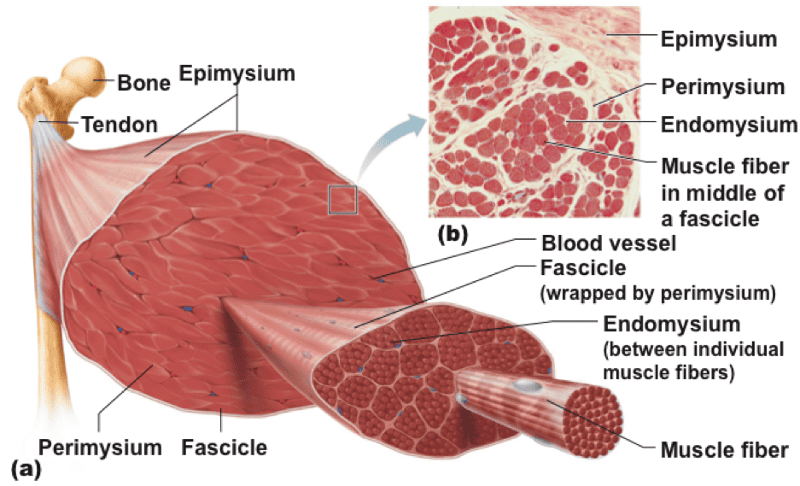
Identify the letter that indicates the muscle fiber
a. tendon
b. epimysium
c. fascicle (wrapped by perimysium)
d. endomysium (between individual muscle fibers)
e. muscle fiber
E
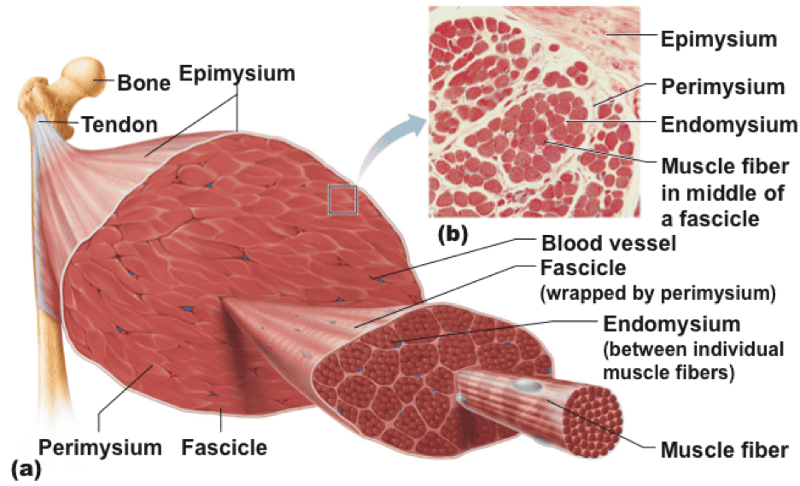
Identify the letter that indicates the epimysium
a. tendon
b. epimysium
c. fascicle (wrapped by
perimysium)
d. endomysium (between individual muscle
fibers)
e. muscle fiber
B
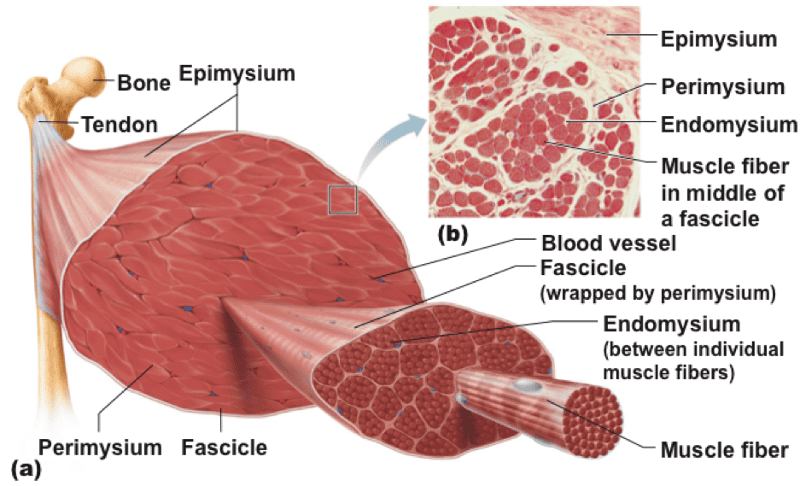
This structure is composed entirely of dense regular connective tissue and connects bone to muscle
a. tendon
b. epimysium
c. fascicle (wrapped by
perimysium)
d. endomysium (between individual muscle
fibers)
e. muscle fiber
A
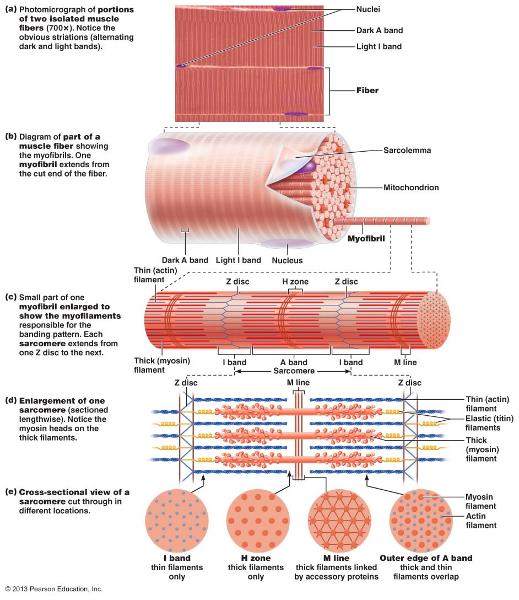
This structure is composed of thick (myosin) filaments
a. I band
b. sarcomere
c. thin (actin) filament
d. elastin (titin) filament
e. myosin heads
E
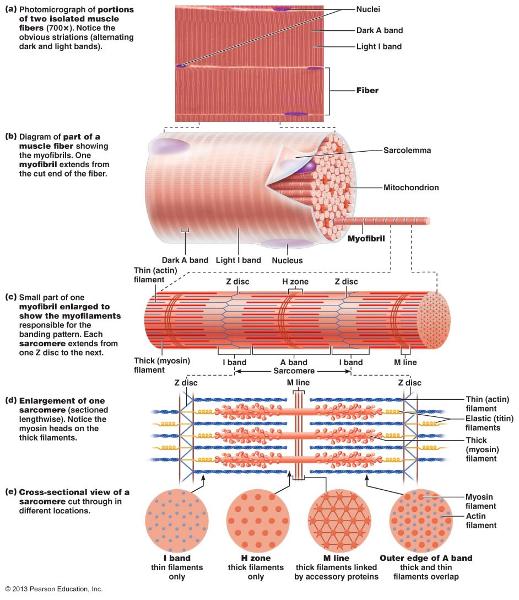
Identify the letter that indicates the titin filament
a. I band
b. sarcomere
c. thin (actin) filament
d.
elastin (titin) filament
e. myosin heads
D
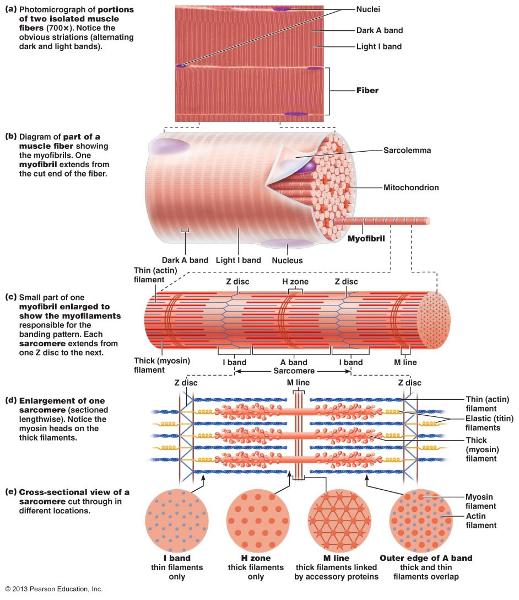
This structure is the basic unit of contraction
a. I band
b. sarcomere
c. thin (actin) filament
d.
elastin (titin) filament
e. myosin heads
B